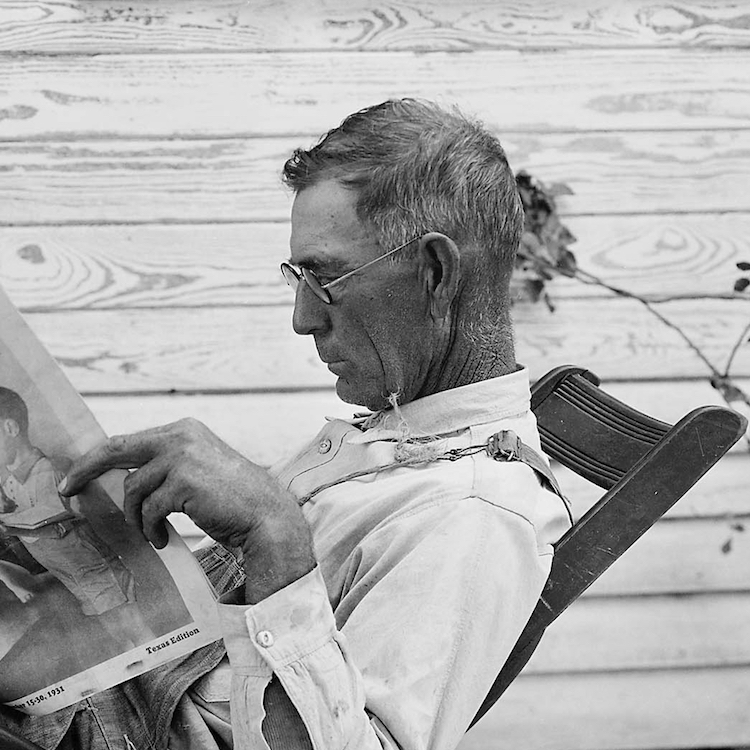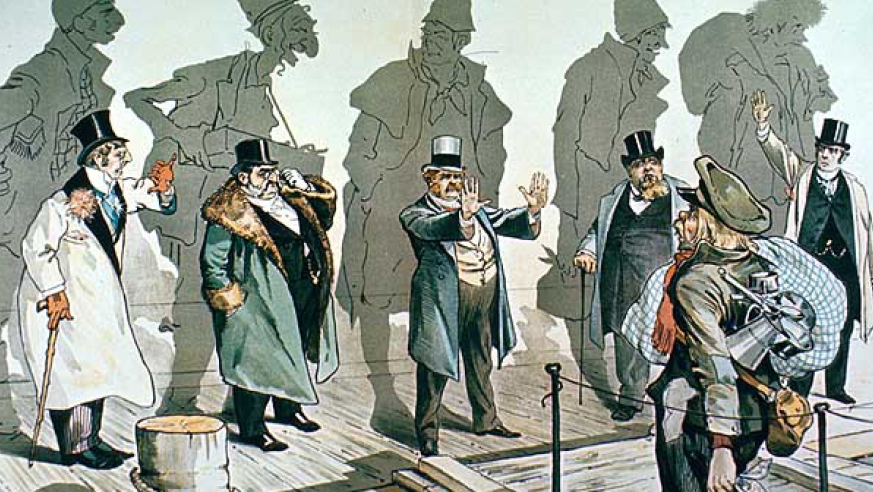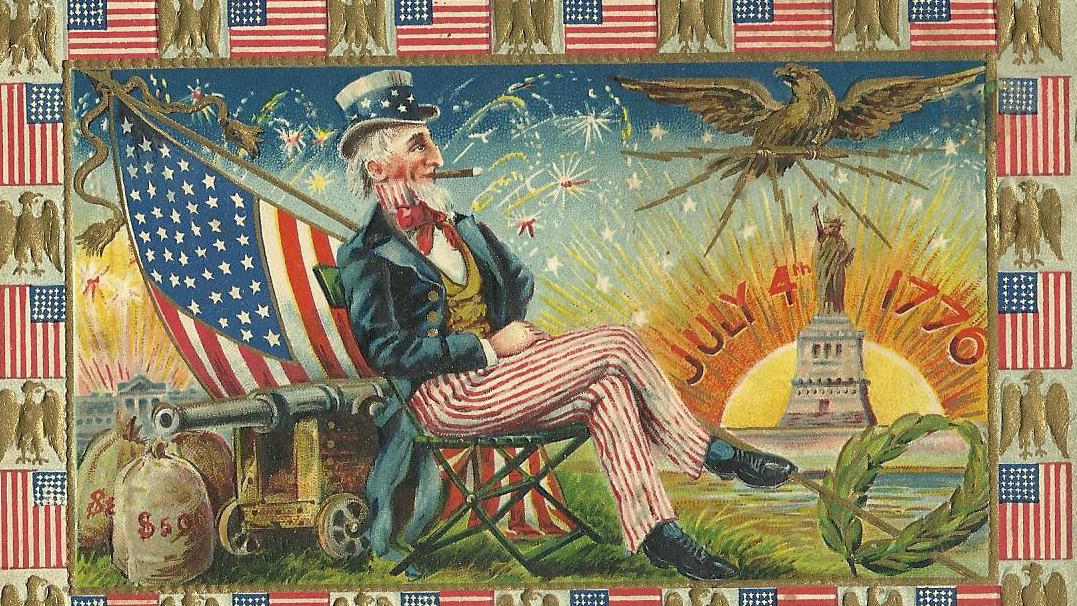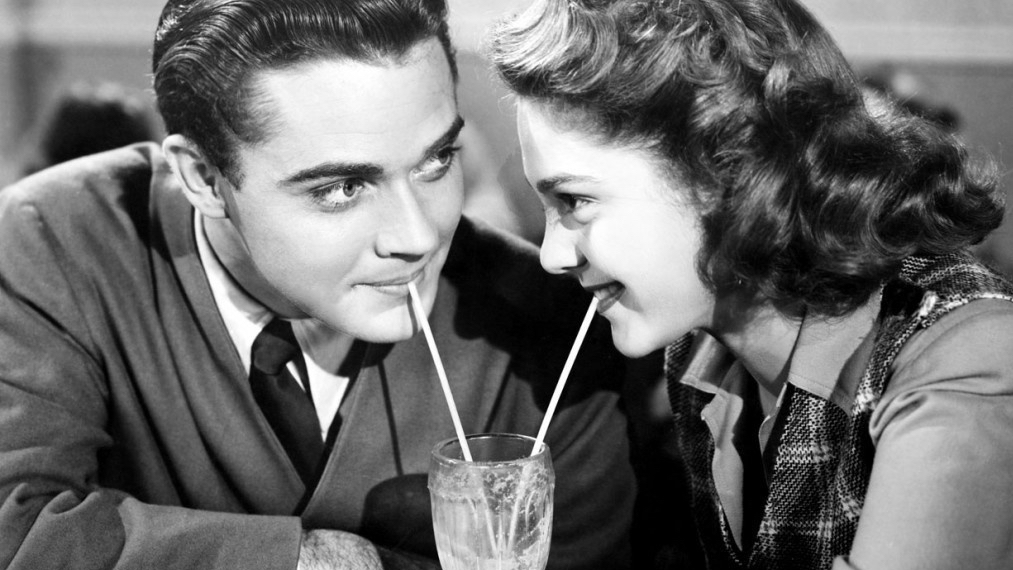The Know-Nothings were one of the more curious third-party movements in American history. They briefly flourished in the mid-1850s, but by the late 1850s had broken up and faded away over the slavery issue. Their main goal was to restrict Catholic immigration. Some even believed the Pope wanted to take over the country.
The Know-Nothing term came from their habit of answering “I know nothing,” if asked about their activities. They were ironically also known as Native Americans, though their official name was the American Party.
But, although the Know-Nothings could organize well enough to win elections, they were of no use at all during that time when they took over the project to finish the Washington Monument.
The project was originally run by a private group, the Washington National Monument Society. Construction began April 18, 1848, followed by a cornerstone ceremony on July 4, 1848. The Society decided not to ask the U.S. government for help, but to rely solely on private donations.
One method was to provide a Society membership certificate to anybody who gave at least a dollar—and this was to prove the Society’s Achilles heel.
The Society always found it difficult to raise money, and in December 1854, it had to suspend operations. The Monument shaft had reached 152 feet, out of today’s 555 feet and 5 1/8 inches.
Convinced that they could run things better than that, some 755 Know-Nothings bought themselves a membership at a dollar apiece, and showed up at the Society’s next meeting on Washington’s birthday, February 22, 1855. Soon enough all 13 of the Board of Managers were Know-Nothings—–755 votes each. The Treasurer, the Secretary, and the Third and Second Vice-Presidents—755 votes.
The First Vice-President, who really ran things, was now Vespasian Ellis, who also ran a Washington, D.C. Know-Nothing newspaper, The Daily American Organ. For whatever reasons, Mr. Ellis had to make do with no more than 754 votes.
On February 27, 1855, the original society sent a letter to the new one, protesting, “That the election held on the 22d instant, of officers and managers of the Washington National Monument Society, was in direct violation of the said society, and therefore null and void.”
That same day, the new society fired back, “That the board do not admit the right of the gentlemen constituting the late board of managers of the society to interfere at all in the affairs of administration of this society other than as members thereof.” And that was that.
The March 20, 1855 Daily American Organ was quite optimistic about the challenge ahead: “In a few days the plan of operations for the collection of funds for this purpose, will be arranged,” followed by “energetic measures,” and “That the Monument will be built speedily, we entertain not a shadow of doubt.”
They were in for a rude awakening. Private contributions, such as they were, dropped off even further. In a short while the Know-Nothings began offering excuses in the Organ and elsewhere.
For instance, in the March 6, 1856 Organ, Mr. Ellis wrote, “ The country cannot be roused to liberality, nor even to gratitude; and the agents who have been appointed have many of them returned to us disappointed and despairing, deeply wounded by insult heaped upon them.”
The March 15, 1856 Organ complained that if it were not for the anti-Know-Nothing campaign in many other newspapers, the new society would have had tens of thousands of dollars in contributions, rather than seven or eight thousand.
Such work as the Know-Nothings did do, began very late, on September 1, 1855, and concluded early, on December 1, 1855. The unused marble paid for by the regular society was not even enough for two full courses, or four feet in height, so the Know-Nothings finished the second course by drawing on a pile of condemned, sub-standard marble that had been accumulating on the grounds.
To raise money, the Know-Nothings even sold the construction crane needed to haul marble blocks in the first place.
There was no additional construction in 1856, and the Know-Nothings slowly gave up trying. By October 1858, they had turned control back to the old society.
One John Carroll Brent went over to the office and found the place a neglected mess: “I found the office in a very bad condition, the Paper and Walls being damp and mouldy [sic] from its having been so long closed and unoccupied. The Books & papers were in much confusion & exposed to injury from the dampness of the Rooms.”
The old society was back in charge now, but still no further work was done, until the U.S. government took over the project, and completed it on December 6, 1884.
[hr style=”striped”]Sources: The Evening Star (D.C.)—March 18, 1856, page 2; The Washington Sentinel (D.C.)—-June 2, 1855, page 2; The Daily American Organ——March 20, 1855, page 2; March 6, 1856, page 4; March 15, 1856, page 2; and the National Archives—-Record Group 42, Entry 421.








